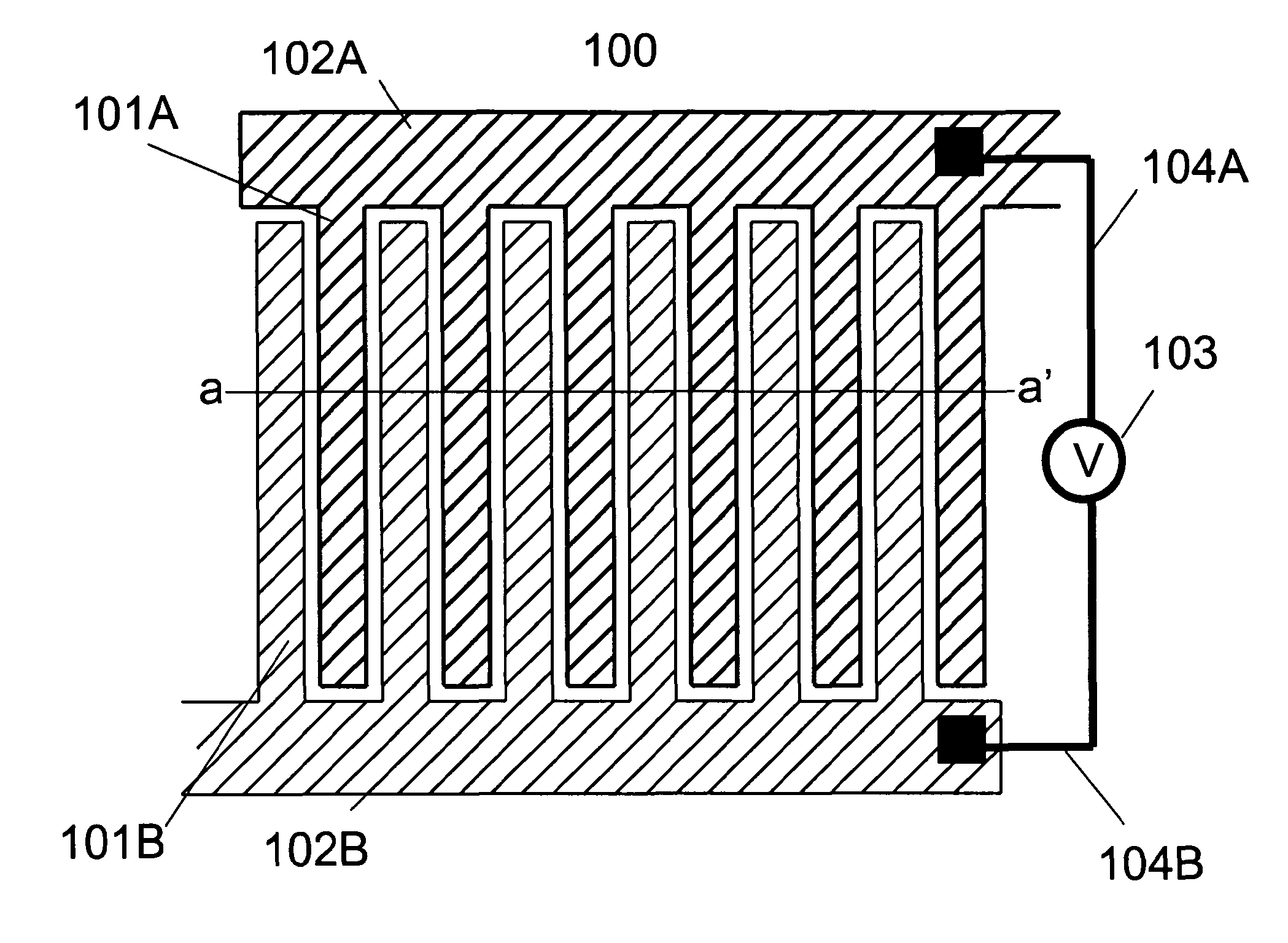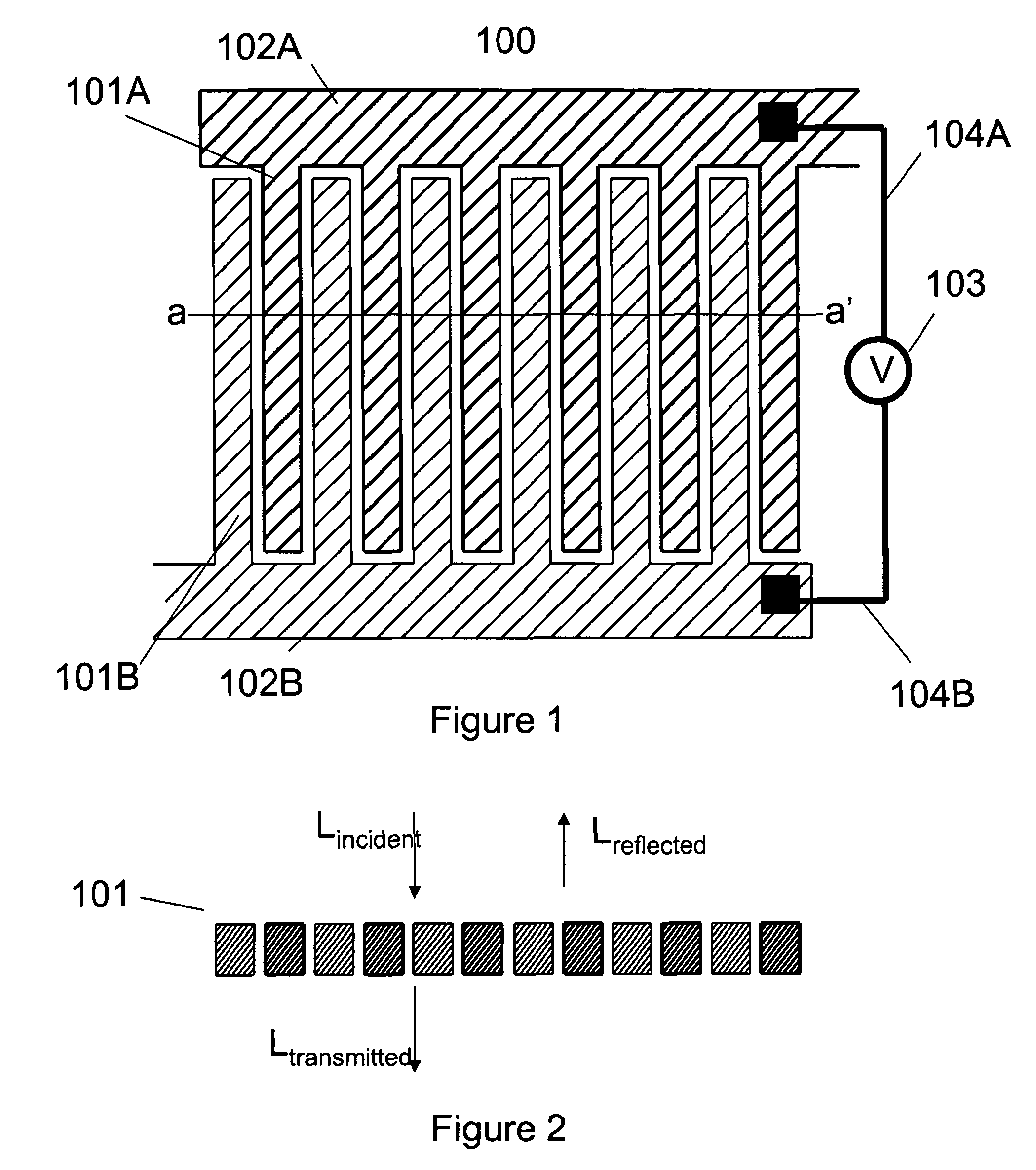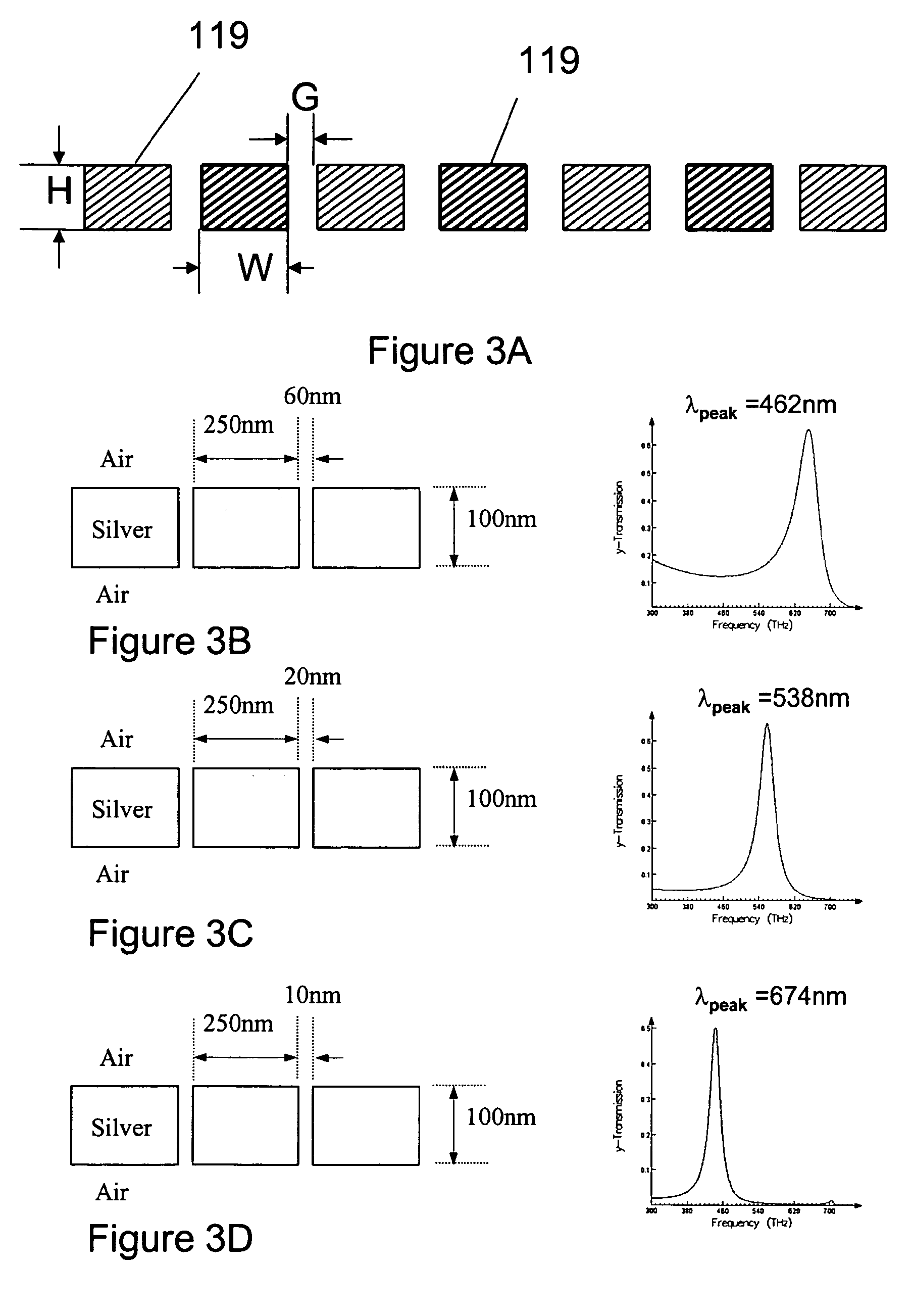Tunable plasmonic filter
a plasmonic filter and plasmonic filter technology, applied in the direction of instrumentation, solid-state device signal generators, picture signal generators, etc., can solve the problems of color quality difficult to control, liquid crystal response time is much slower than that of a typical electronics circuit,
- Summary
- Abstract
- Description
- Claims
- Application Information
AI Technical Summary
Benefits of technology
Problems solved by technology
Method used
Image
Examples
first embodiment
[0020]FIG. 1 illustrates the invention in which a control voltage or current is applied between portions of the metal plasmonic filter. In FIG. 1, a plasmonic tunable filter 100 contains interdigitated metal island or finger structures 101, such as subwavelength island structures separated from each other by subwavelength gaps. The first set of islands or fingers 101A are electrically connected together by a metal connector 102A. The second set of islands or fingers 101B are electrically connected together by a metal connector 102B. The metal may be any metal and is preferably Ag, Au, Cr or Al or alloys thereof. A voltage or current source 103 is connected to each set of islands or fingers via separate leads 104A and 104B. Thus, one output of the voltage or current source is connected to the first part 101A / 102A of interdigitated plasmonic filter structure and the other output is connected to the second part 101B / 102B of the interdigitated plasmonic filter structure. The voltage or ...
second embodiment
[0026]FIG. 4A illustrates an alternative configuration of tunable plasmonic filter according to the invention, in which a control voltage or current is applied indirectly to the metal plasmonic filter structure array. In this configuration, the voltage is applied from a voltage source 403 to electrically conductive electrodes, such as plates 401, 402 located adjacent to the plasmonic metal filter structure array 101. For example, the plates 401, 402 may be located on the opposite sides of the array 101 and be connected to opposite polarity outputs of the voltage source 403.
[0027]For display applications, one or both plates 401 and 402 may comprise optically transparent and electrically conductive plates. For example, the plates may comprise a transparent, conductive material, such as indium tin oxide or aluminum zinc oxide, or a composite material comprising an insulating transparent matrix, such as a polymer matrix, and an electrically conductive filler, such as metal wires or carb...
PUM
| Property | Measurement | Unit |
|---|---|---|
| width | aaaaa | aaaaa |
| width | aaaaa | aaaaa |
| height | aaaaa | aaaaa |
Abstract
Description
Claims
Application Information
 Login to View More
Login to View More - R&D
- Intellectual Property
- Life Sciences
- Materials
- Tech Scout
- Unparalleled Data Quality
- Higher Quality Content
- 60% Fewer Hallucinations
Browse by: Latest US Patents, China's latest patents, Technical Efficacy Thesaurus, Application Domain, Technology Topic, Popular Technical Reports.
© 2025 PatSnap. All rights reserved.Legal|Privacy policy|Modern Slavery Act Transparency Statement|Sitemap|About US| Contact US: help@patsnap.com



